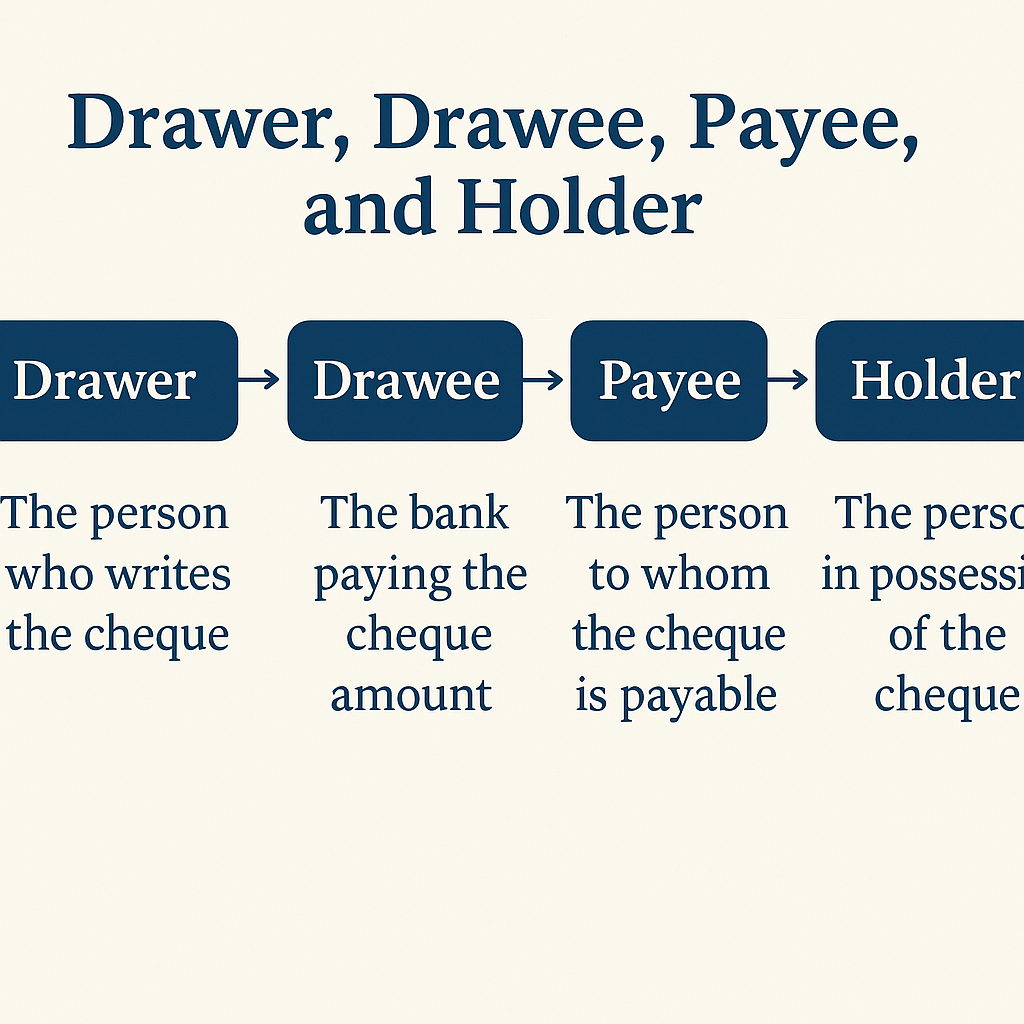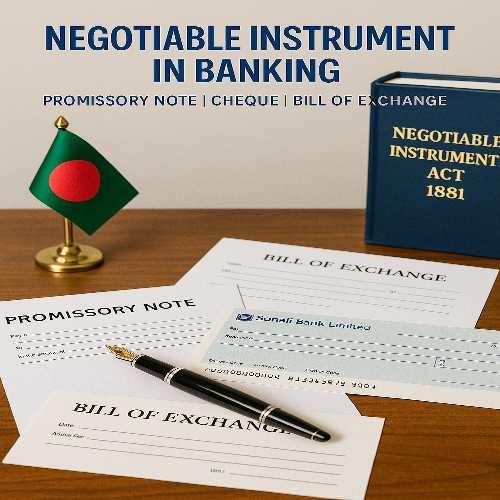Drawer, Drawee, Payee, and Holder — Cheque Terminology Explained
Written by: Md. Sohel Rana | August 11, 2025
1. Drawer
The Drawer is the person who writes and signs the cheque, instructing the bank to pay a certain amount to the payee. Example: If Mr. Rahman issues a cheque from his account, he is the drawer.
2. Drawee
The Drawee is the bank or financial institution that is directed to pay the specified amount mentioned on the cheque. Example: Uttara Bank Ltd, Khulna Branch, being the account holder’s bank, acts as the drawee.
3. Payee
The Payee is the person or entity in whose favour the cheque is drawn, i.e., who will receive the money. Example: If the cheque is made payable to Ms. Ayesha, she is the payee.
4. Holder
The Holder is the person in possession of a cheque that is payable to them or endorsed to them. The holder has the legal right to receive the payment mentioned in the cheque.
Example Scenario
Mr. Rahman (Drawer) issues a cheque from his account with Uttara Bank Ltd (Drawee) in favour of Ms. Ayesha (Payee). Ms. Ayesha, holding the cheque, becomes the Holder until it is deposited or encashed.




